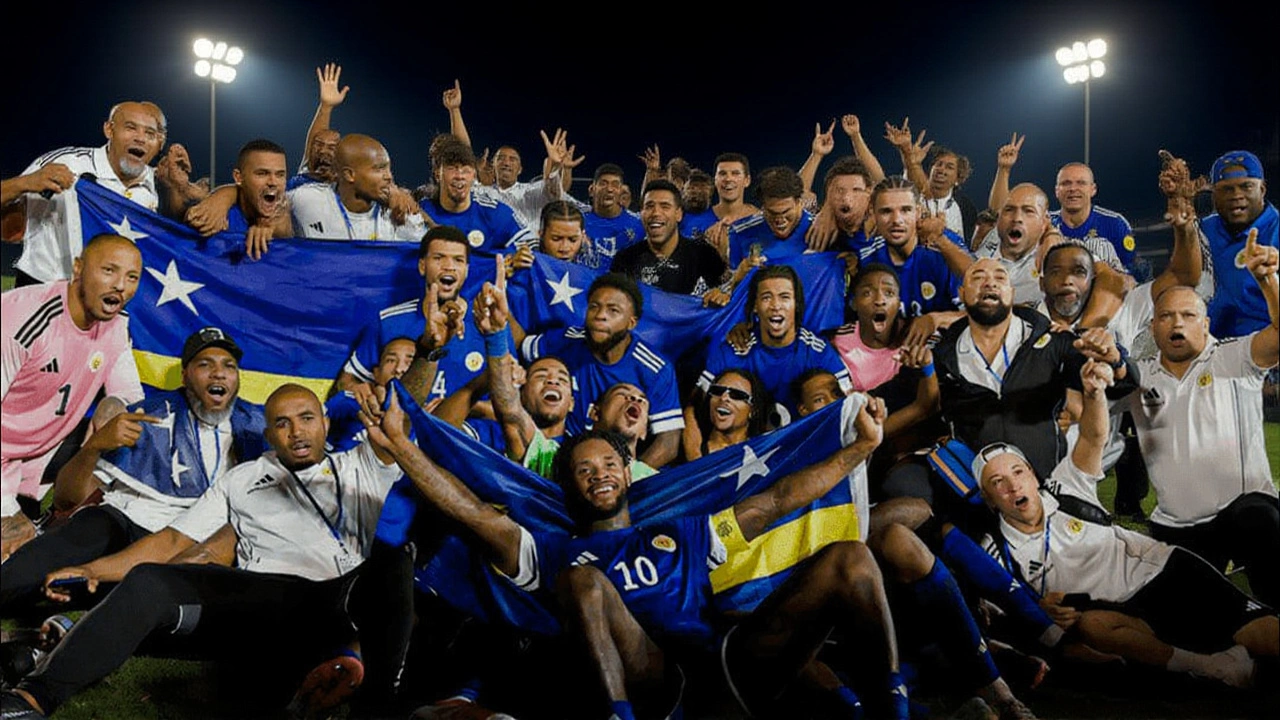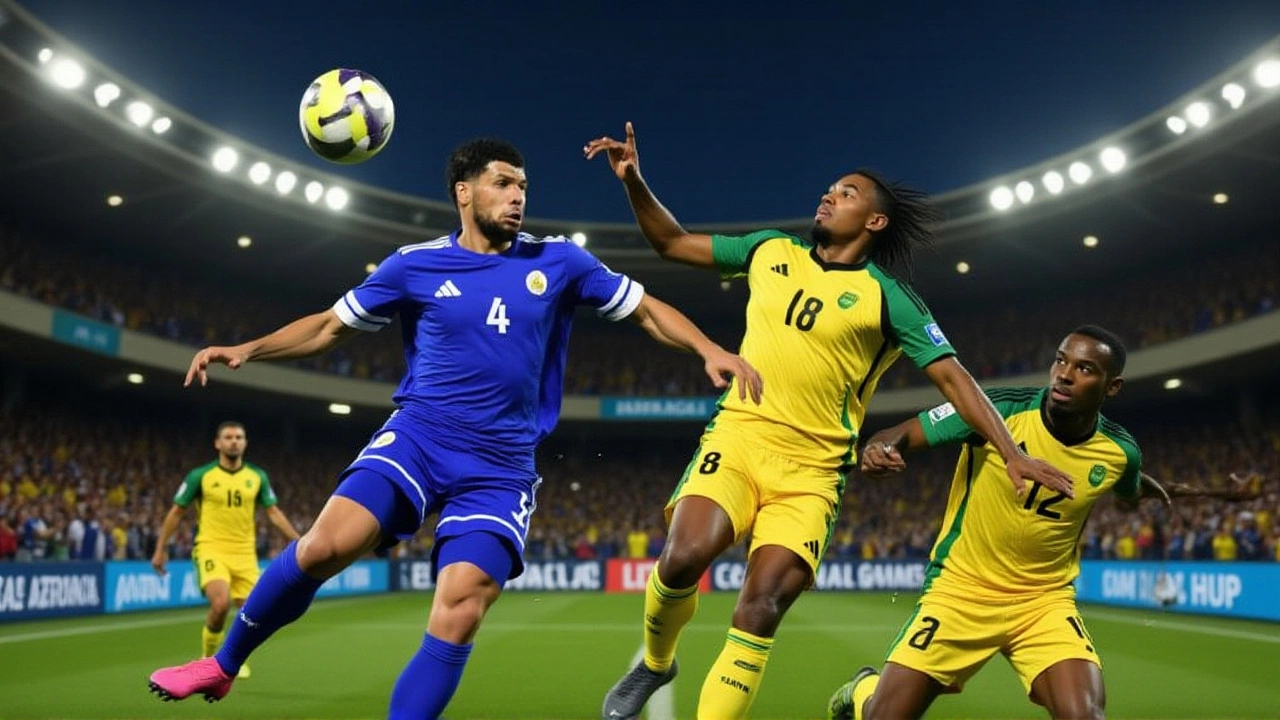On Tuesday, November 19, 2025, the world of international football stopped for a moment as Curaçao became the smallest nation ever to qualify directly for a FIFA World Cup finals — a feat no one saw coming. With a population under 160,000, the Caribbean island didn’t just break records; it shattered expectations. The historic moment came after a 0-0 draw with Jamaica in a tense, rain-slicked match that ended with a controversial penalty appeal waved off by the referee. Meanwhile, just hours away in Guatemala City, Suriname scored a goal in the 94th minute — a moment so unexpected, even the broadcasters paused. It wasn’t a win, but it was enough. Suriname, despite losing 3-1 to Guatemala, eliminated Honduras and booked a ticket to the inter-confederation playoffs. The drama wasn’t just thrilling — it was historic.
A Nation That Shouldn’t Be Here — But Is
Curaçao’s journey to the World Cup is the kind of story that reminds you why football matters. Once part of the Netherlands Antilles, the island gained autonomy in 2010 and has been building its football identity slowly, often overlooked in a region dominated by Jamaica, Mexico, and the United States. Their squad is mostly made up of players from the Dutch lower leagues, with a handful of local stars. No professional club in Curaçao even has a stadium that holds 10,000 fans. Yet here they are — ranked 117th in the world, with a population smaller than many U.S. high schools — heading to the 2026 World Cup.ESPN confirmed the milestone in a report published the same day, noting that no smaller nation had ever qualified directly. Not the Faroe Islands. Not Iceland before their 2018 run. Not even Gibraltar. Curaçao did it by holding Jamaica to a draw in their final group match, while Jamaica’s earlier losses to Trinidad and Tobago and Panama sealed their fate. The Jamaicans had everything going for them — home advantage, better-ranked players, a stronger federation — but they couldn’t close the deal. The final whistle in Willemstad echoed louder than any goal.
Suriname’s Miracle in Guatemala City
If Curaçao’s story was quiet persistence, Suriname’s was pure cinematic chaos. In Guatemala City, the home crowd roared as Guatemala took a 3-0 lead by the 70th minute. Suriname, a nation of just 600,000 people, had been outplayed, outclassed, and outmuscled. Their goalkeeper made three miraculous saves. Their captain, Stefano Rijssel, limped off with a hamstring tear in the 62nd minute. It was over. Or so everyone thought.Then, in the 94th minute, substitute Ché Nunnely — a 24-year-old forward playing in the Dutch third division — pounced on a loose ball after a Guatemala clearance went awry. He slotted it past a stunned goalkeeper. The stadium fell silent. The Surinamese bench erupted. On YouTube, the International Soccer Break crew’s commentary went viral: "It was all Guatemala. All Guatemala. All Guatemala. But Surinam with the one moment that makes the difference, eliminating Honduras. Wow."
That goal wasn’t just about points. It was about math. Honduras had beaten El Salvador earlier in the day, but Suriname’s last-gasp strike gave them a better goal difference. Honduras, a team that had qualified for five of the last eight World Cups, was out. The ISB crew noted at timestamp 473: "Surinam will be at that playoff in March in Mexico." And they were right.

Haiti’s Return After Half a Century
While Curaçao and Suriname stole headlines, another miracle unfolded in the Caribbean. Haiti, a nation that last played in the World Cup in 1974, returned to the global stage after a 50-year absence. Their 2-0 win over Nicaragua, sealed by goals from striker Jean-Jacques Pierre and midfielder Clément Teus, sent thousands into the streets of Port-au-Prince. For a country still rebuilding after earthquakes, political unrest, and economic collapse, this was more than sport. It was pride."We didn’t just qualify," said Haitian captain Georges-Kévin Nkoudou in a post-match interview. "We reminded the world that we exist. That we fight. That we don’t give up."
Meanwhile, traditional giants Honduras and Costa Rica — both former World Cup quarterfinalists — were eliminated after a 0-0 draw that felt like a funeral. Neither team scored a single goal in their final three matches. The collapse was stunning. Costa Rica, once known for their tactical discipline, now looks like a team in transition. Honduras, plagued by internal federation disputes, may be entering its darkest era in football.
What Comes Next? The Playoffs in Mexico
Now, Suriname and Jamaica will head to Mexico in March 2026 for the FIFA inter-confederation playoffs. They’ll face one team each from Asia, Africa, and Oceania. For Suriname, it’s a shot at redemption — and perhaps a chance to play on the same field as Neymar or Mbappé. For Jamaica, it’s a chance to erase the memory of their failed 2022 campaign and return to the World Cup for the first time since 2014.The stakes? One spot in the 2026 World Cup. Two teams. One shot. No margin for error.

Why This Matters Beyond the Pitch
This isn’t just about football. It’s about representation. Curaçao, with no professional league, no FIFA-funded academy, and barely a national stadium, beat nations with billions in resources. Suriname, a country where many kids play barefoot on dirt fields, scored the goal that knocked out a World Cup veteran. Haiti, emerging from decades of hardship, reminded the world that talent doesn’t need wealth — just heart.These results expose the cracks in the old football hierarchy. The days when only the big names qualified are over. The global game is leveling up — and the underdogs? They’re not just showing up. They’re rewriting the rules.
Frequently Asked Questions
How did Curaçao qualify for the World Cup despite having such a small population?
Curaçao finished second in CONCACAF Group A behind Panama, earning direct qualification because Jamaica — their closest rival — failed to win any of their final three matches. Curaçao’s defensive discipline, led by goalkeeper Marvin Egho, allowed just two goals in six qualifiers. With a population under 160,000, they’re now the smallest nation ever to reach a World Cup finals — smaller than the Faroe Islands or Iceland at their qualifying peaks.
What was the significance of Suriname’s last-minute goal against Guatemala?
Suriname lost 3-1 to Guatemala, but their 94th-minute goal gave them a better goal difference than Honduras, who had won their match earlier that day. Without that goal, Honduras would have advanced. Instead, Suriname moved into the playoff spot, eliminating a team that had qualified for five of the last eight World Cups. It’s one of the most dramatic goal-difference swings in CONCACAF qualifying history.
Why did Haiti qualify after a 50-year absence?
Haiti topped Group C after a 2-0 win over Nicaragua, combined with Honduras and Costa Rica’s 0-0 draw. Their squad, mostly based in France and Canada, showed remarkable cohesion under coach José Augusto. This is Haiti’s first World Cup appearance since 1974, when they famously lost to the Netherlands but stunned the world with their attacking play. This time, they’re back — not as a curiosity, but as a legitimate contender.
Who will Suriname and Jamaica face in the March 2026 playoffs?
The exact opponents aren’t confirmed yet, but the draw will pit Suriname and Jamaica against the third-place finishers from Asia, Africa, and Oceania. Likely candidates include New Zealand, Senegal, or Jordan. The winners of the two playoff matches earn the final two spots in the 2026 World Cup. For Suriname, this could mean a trip to Mexico City to face a team like Australia or Tunisia — a dream they’ve chased since 1982.
What does this mean for smaller football nations moving forward?
Curaçao, Suriname, and Haiti’s success proves that structure, unity, and smart coaching can overcome financial disadvantage. FIFA’s new expanded World Cup format (48 teams) has opened doors, but these teams didn’t just benefit from expansion — they earned it. Their stories will inspire other micro-nations like Belize, Saint Lucia, and Grenada to invest in youth academies and diaspora talent. Football’s future isn’t just in Europe and South America — it’s in the Caribbean, too.
Why were Honduras and Costa Rica eliminated despite being traditional powerhouses?
Both teams collapsed under pressure. Honduras lost to El Salvador and Panama, and their 0-0 draw with Costa Rica was a mirror of their stagnation. Costa Rica’s squad is aging, with no clear heir to legends like Alvaro Saborio or Keylor Navas. Their federation has been mired in corruption scandals since 2020, leading to poor player development. Neither team scored a single goal in their final three qualifiers. Their elimination marks the end of an era — and a wake-up call for CONCACAF’s old guard.
